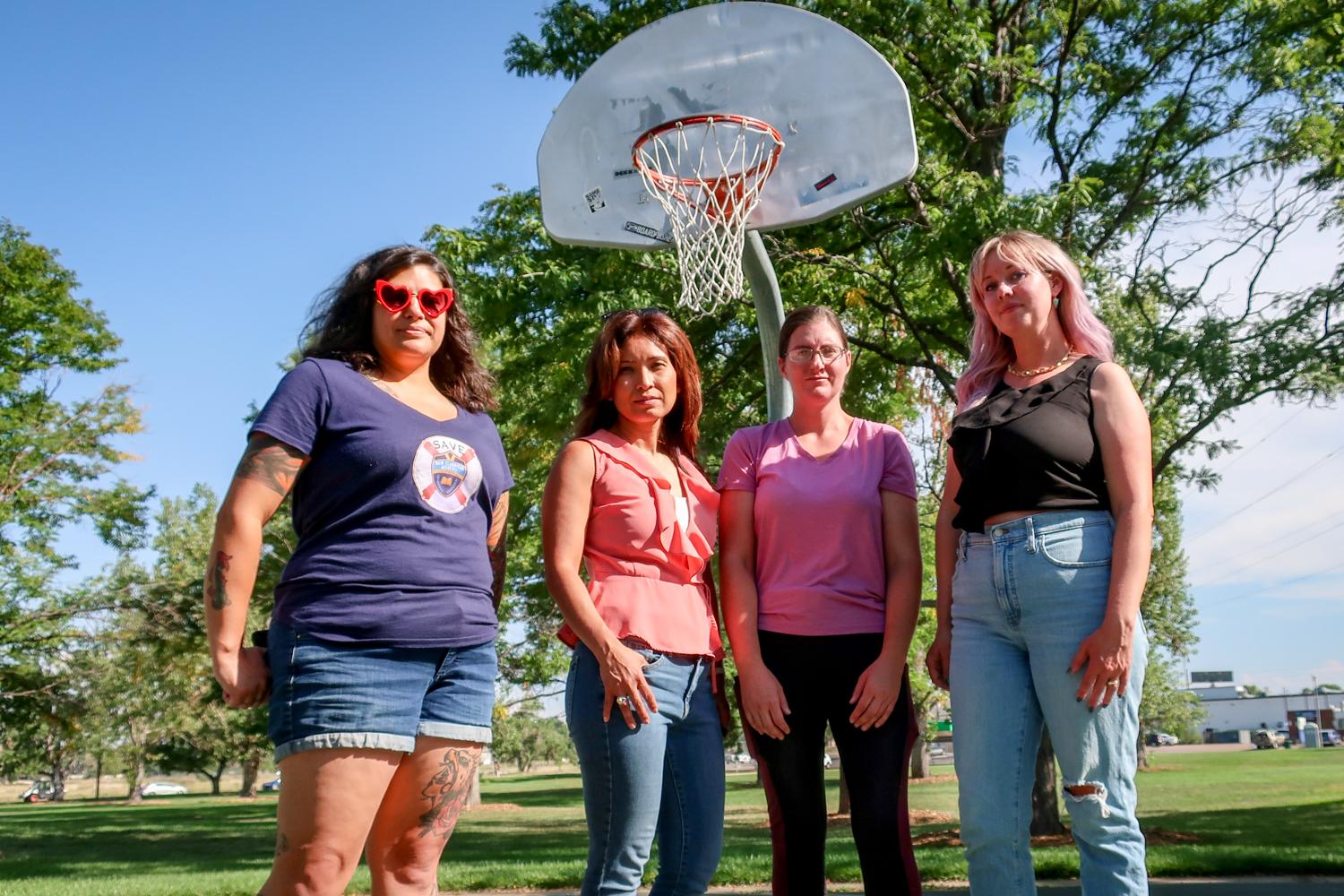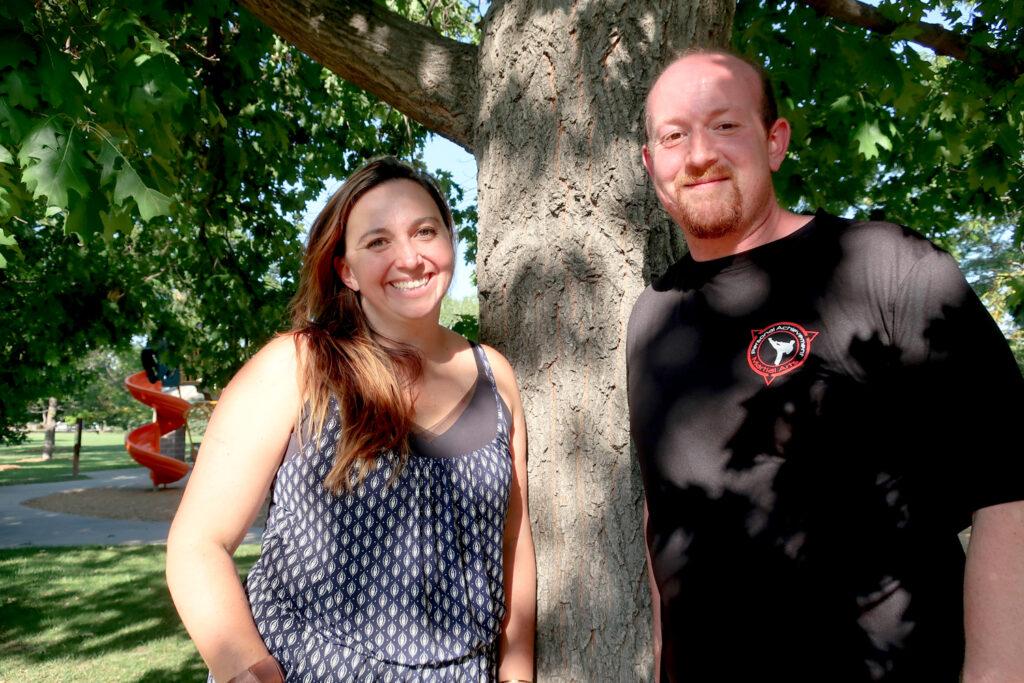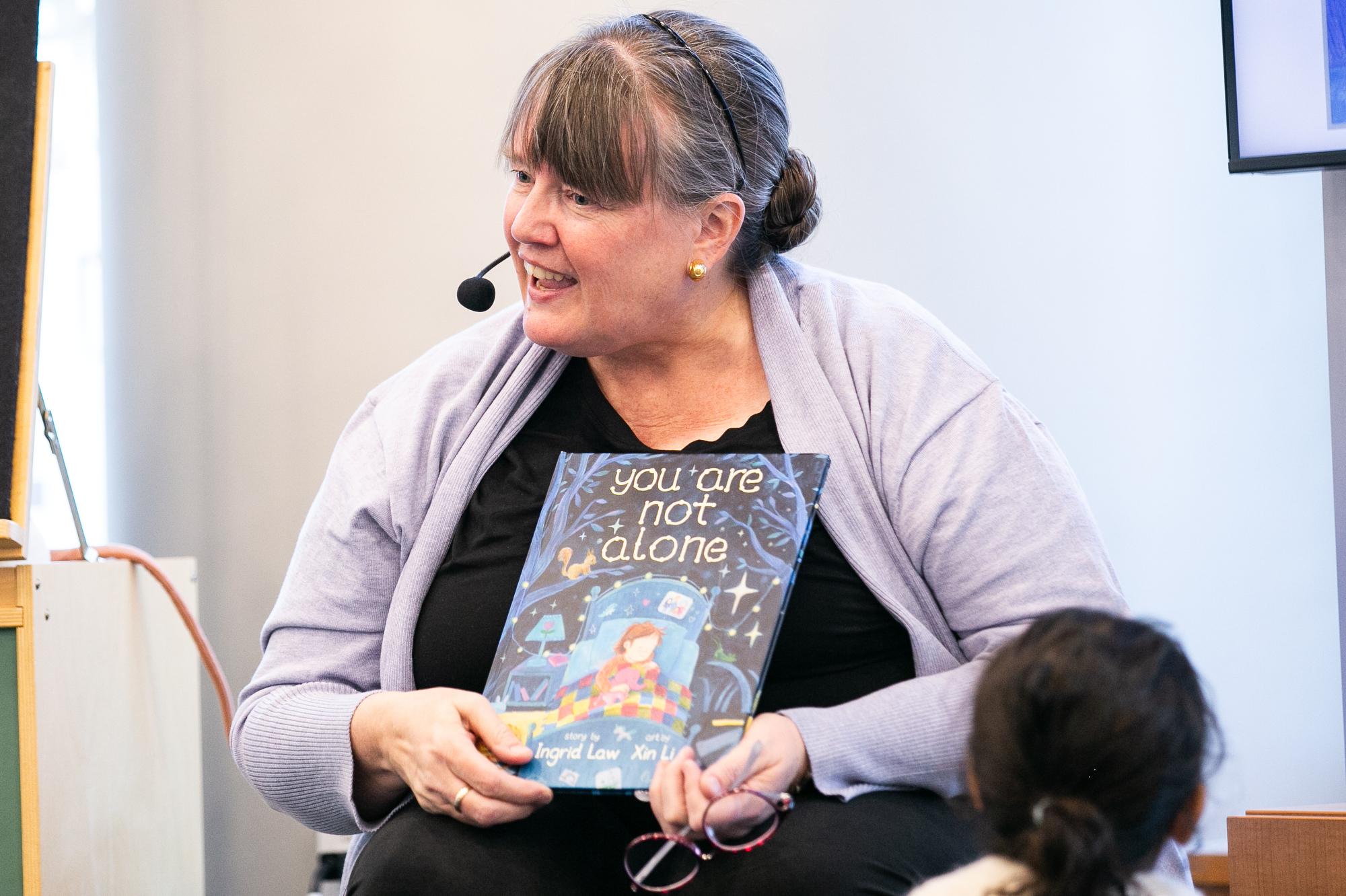
Selene Hernandez Ruiz bought a house near New Classical Academy at Vivian, a little neighborhood school in the Denver suburb of Wheat Ridge surrounded by quiet streets, single-family homes and apartments.
Not just because of the small school’s emphasis on classical books, logic and rhetoric but because of its focus on treating all people with kindness.
“They talk about things like empathy and sticking up for people that sometimes don't have a voice,” said the mother with two daughters at the school. “So it feels very close to home. For me, it's very personal because I am a minority. I am an immigrant. I have a disabled kid.”
Among Vivian’s 117 students, there is a lot of socio-economic and racial diversity. There are students in a deaf and hard of hearing program — all learning together in the same classrooms.
“There's so much value in those friendships,” she said. “There’s so much value in the humanity that goes into our wonderful community.”
Hernandez Ruiz calls schools like Vivian “amazing anchors of society.” But the anchor may be cut loose. The small school is on the Jefferson County School District’s closure list as the district grapples with a declining birth rate and aging residents. The district has nearly 19,000 unused seats in elementary schools alone. Altogether, the closures will displace 2,600 students and about 422 staff positions.
No parent faced with a school closure is happy about it, but parents in Wheat Ridge see larger problems at work in the three schools listed to close. They are raising red flags over the inequity of closing higher poverty schools and pointing out potential pitfalls of integrating into whiter and wealthier schools.
And officials from the northwest Denver suburb say the district miscalculated some of the area's development and worry about how the loss of those schools might play out for the community's middle and high schools. District officials stand by the criteria they used and say the school consolidations will allow them to better serve all students and perhaps increase equity.

Schools with fewer than 220 students or low building usage were placed on the list. Those were largely schools with higher concentrations of students living in poverty.
Over the past couple of decades, “good schools” have become synonymous with high test scores, which closely track with how white and wealthy a school is. Many parents who have the ability to drive their children to school outside their neighborhood do. Moreover, Vivian parents say the choice system allows wealthier parents to gentrify a neighborhood, and then drive their children to a school outside their neighborhood.
“I just think that it (Vivian) should be the example of what we should be striving for at every single school,” said parent Debbie Gale Mitchell. “But unfortunately, the way the choice system is in the state of Colorado, it allows parents to concentrate their wealth and privilege in specific schools.”
Educational values other than test scores — things like racial and socio-economic balance, inclusive classrooms or walkability — often leaves little support for neighborhood schools that have high numbers of students living in poverty. The schools on JeffCo’s proposed closure list have an average of 54 percent of students eligible for federal free and reduced-price lunch compared to the district average of 28 percent.
“There's no mechanism to protect these schools when the choice system is set up the way that it is,” said Gale Mitchell, the mother of a third-and fifth-grader at Vivian. Parents would like equity, diversity and the impact of school closures on low-income families to be criteria in future school consolidations.

Some parents say a smaller school has allowed their children to thrive. Vivian is one of the few schools that has a deaf and hard of hearing program where children can mainstream into regular classrooms. Parent Jamie Lodhi said her son didn’t speak until he was almost 3 and a half years old.
“He had the option in Vivian to use spoken language or sign. And that really helped him learn to open up and communicate and really start speaking… now he's talking a mile a minute. He's ahead academically of where he should be.”
Most JeffCo schools proposed for closure are demographically similar to the schools that will absorb them. The two biggest exceptions are two of the Wheat Ridge schools.
Parents don’t understand why Vivian students have to move to nearby Stober Elementary, which is a much wealthier and whiter school.
Sixty-eight percent of Vivian students are eligible for free and reduced-price lunches, while only 22 percent are at Stober.
Five years ago, Stober was supposed to close and students were to move to Vivian. Stober’s building was ranked in poor condition, few students lived in the boundary, and the school sits on one of the smallest sites in the district. But Stober's parents pushed back against the closure.
In the end, the school board chose to close just one school: Pleasant View Elementary in Golden, where 80 percent of the students qualified for federally subsidized lunches.
That the communities with greater challenges are the ones having to move is problematic, parents say.
“We’re talking about communities in which sometimes the mom and dad are working all day and therefore they don't have a voice … and now expecting their children to pay the price for the consolidation of schools and resources just doesn't seem fair,” said Vivian parent Hernandez Ruiz.
Wheat Ridge’s Kullerstrand Elementary is also slated for closure. Sixty-two percent of Kullerstrand’s students qualify for free and reduced-price lunch, while only 14 percent of Prospect Valley’s do — that’s the school designated to receive Kullerstrand students.
District officials said demographics were considered but were not a deciding criterion.
Where the district invested 2018 bond dollars helped make the decision.
Bond dollars went into virtually every Jefferson County school.
In the case of Vivian and Stober, the two schools had roughly the same capacity. More money was invested into Stober, the wealthier, whiter school, giving it new classrooms and a music room. It is now larger and better equipped to absorb Vivian’s students, according to district officials.
Prospect Valley Elementary, meanwhile, received $21 million from the 2018 bond so it could be rebuilt with new classroom space. It will now absorb Kullerstrand students.
District officials dispute the claim that the district’s choice system concentrates wealth and whiteness. Kimberly Eloe, the district’s executive director of communications, said there are many reasons families choose a school outside their neighborhood school.
“I do think it's somewhat of a misnomer to say that we have schools that only wealthy affluent families are choicing out of,” she said. “Our data shows us there are families who are also choicing into schools with a more diverse population or programming. Our goal is just to continue to better resource all of our schools in a way that supports that choice pattern.”
There just simply aren’t enough students for all the elementary schools anymore, she said.
Tara Peña, the district’s chief of family, school, and community partnerships, also disputes the allegation that closing certain schools is inequitable. She said the consolidation effort will increase equity because right now and that the district can’t adequately meet children’s needs as staffing is so thinly spread. Some smaller schools have split grades or lack full-time counselors.
“I believe that when we are able to more equitably resource our buildings, my hope is that any one of our schools in JeffCo a family would be honored to send their children to … in whatever articulation area that they are being served, that their needs are being met.”

But the district may face more of a fight about the Wheat Ridge closures. Two city council members have helped distribute 250 lawn signs asking the school board to 'Save Our Community. Save Our Schools.'
The news that three schools in the Wheat Ridge area are on the chopping block was a blow to many. A grassroots coalition was hard at work promoting a strong network of neighborhood schools in the city. In fact, the city council had just approved $20,000 in federal funds for the coalition, which was planning new community hubs and a marketing campaign for three of the closing schools.
“I am so concerned from the bottom of my heart that what we are going to potentially be doing here is showing people other pathways to not send their kids to schools in our community,” said city council member Valerie Nosler Beck. “And next thing you know, it's Everett Middle School, and next thing you know, it's Wheat Ridge High School.”
The district will be conducting a similar analysis of secondary schools starting in January. The district’s Tara Peña said however, it will be looking at factors beyond enrollment such as making sure special programming is equitably spread throughout district middle and high schools.
Wheat Ridge, incorporated into Jefferson County in 1969, was one destination for Denver’s white flight — families who left the capital city after court-ordered busing started. As recently as this summer, the Wheat Ridge city council passed an ordinance outlawing "whites-only" housing covenants in deeds and ordered them removed from real estate records, said Nosler Beck.
“Our community has changed and it’s transitioned into the community that I want to live in — a more diverse, whether socio-economic, race, whatever it might be – but we are taking away the infrastructure that is allowing us to transition,” she said, referring to the three schools slated for closure.
Her and fellow city council member Korey Stites’ families were founding families, settling in the area in the late 1800s. Their grandfathers attended Wheat Ridge High together, as well as generations of family members. The two are both heavily invested in revitalizing the city.

The district projects just 84 future elementary-age children from all of Wheat Ridge’s new development. But council member Stites said a number of developments aren’t on the district’s list, including the Clear Creek Crossing development near the new Lutheran Medical Center and a potential 2,100 units on the existing 100-acre Lutheran medical campus. That’s across the street from one of the schools slated for closure, Wilmore Davis.
“We've got ice cream shops opening up, we've got restaurants opening up that are more kid-friendly and we're trying to attract those families,” Stites said. “So, cutting us out at the knees and taking our schools away, that's not just harmful to the school district, but that's harmful to the city of Wheat Ridge.”
Stites said just because there’s declining enrollment now doesn’t mean there will be in a few years.
“We have a much more diverse Wheat Ridge than it used to be and while there’s fewer kids, those kids deserve that same education that I was able to have. Those neighborhoods deserve the chance to be able to walk to school and stick with those neighborhood schools.”
Even if the district has miscalculated potential new students, officials said there are 2,349 excess elementary school seats in Wheat Ridge right now. Even after consolidation, there will be 1,390 excess seats. Throughout the district after consolidation, there will still be 12,076 excess elementary seats.

It can’t be a ‘nice white parents’ situation
If the school board approves the district’s list of 16 school closures on Nov. 10, parent Katie Zaback has some suggestions to make the transition an opportunity.
Zaback’s two children attend Stevens Elementary, one of the Wheat Ridge schools that will be absorbing another demographically similar school, Wilmore Davis Elementary. One silver lining she sees to the consolidation proposal is the three “receiving” schools will ultimately be more racially and economically integrated.
“We will have a whole articulation area of elementary schools that reflect the demographics of the district,” she said.
But she said the receiving schools, especially the predominantly white Stober and Prospect Valley, have to be thoughtful and prepared for how the integration will happen.
Typically, what happens is white parents take charge of the discourse and control the agenda, said Zaback, who is a member of a local chapter of Integrated Schools. There are racist and inaccurate assumptions that families of color have nothing to add to the discourse about the direction the school should take, undermining integration efforts. This was chronicled in the podcast "Nice White Parents."
“As long as we do it in a way where all voices can be heard in those schools, and we don't have some people who are talking over others or whose preferences are being heard louder than others,” Zaback said. “And that's often what happens when we integrate schools.”
If the consolidation goes through, she said it’s critical that groups representing communities of color can help facilitate the process. She said additional school support will be needed, supports that “reflect the populations who are being most impacted by this.”
A lot of time should be spent listening to impacted communities about what they will need in a new school. For the receiving schools, things won’t stay the same.
“I think that we can prepare ourselves for the fact that our communities are going to evolve and that that's a good thing. Really, think through how do we integrate our PTAs? How do we put different voices into our school accountability committees? How do we make sure that we are changing our practices to be more culturally responsive for everybody in the school?”
Still, Zaback worries the closures, fraught with emotion, could tear communities apart. She also shares the worries of other Wheat Ridge parents about the city’s middle and high school.
“Right now, we have an opportunity to really start investing in our high school and helping our community continue to commit to our high school,” she said.
The district’s Tara Peña said discussions scheduled with each school community in September and October are where parents can make these wishes known. So far, the first discussions in the Wheat Ridge schools have been a little rocky as parents demanded answers to questions about the closures. Peña hopes future discussions can focus on specifics like what special programs and curriculum parents would like to incorporate in their new schools.
“We have an obligation to listen to our families, to our employees, to our students, to make sure that they're represented every step of the way.”









